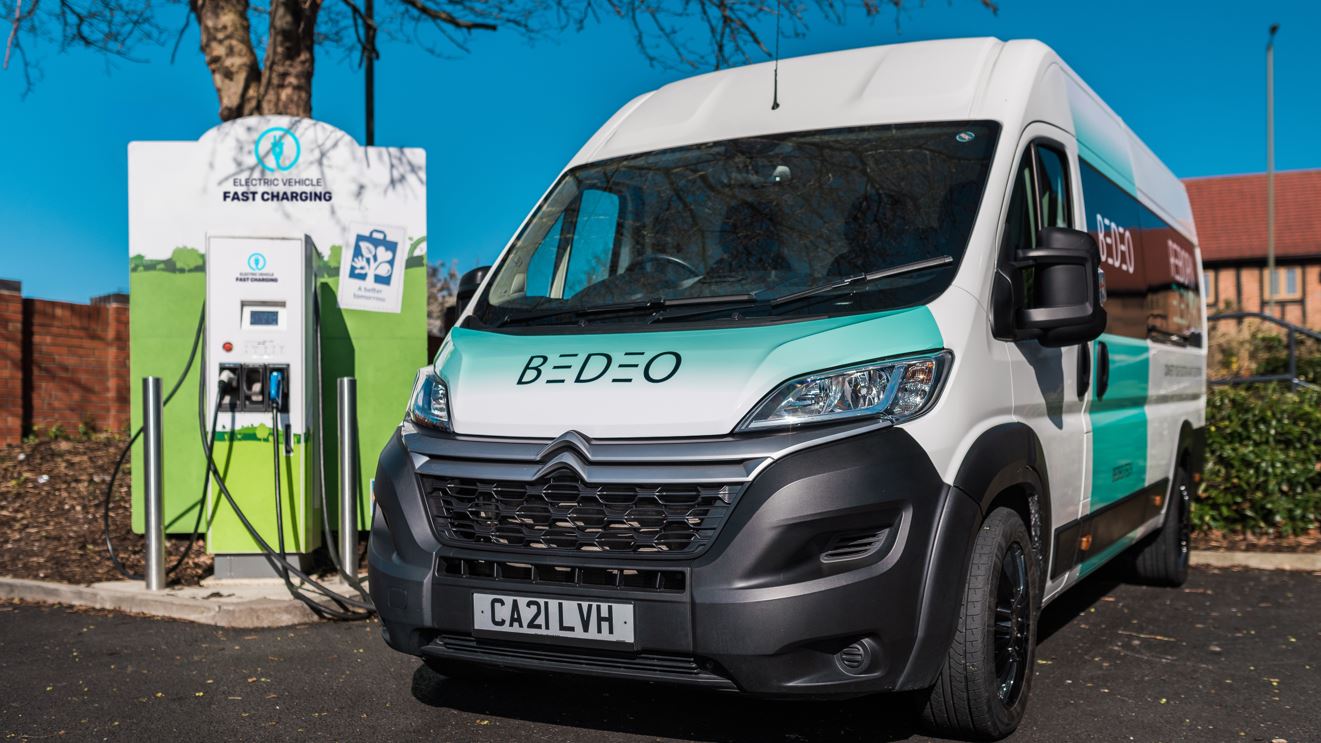BEDEO CEO on Retrofitting: Reborn Electric Vans and Iconic Vehicles
Retrofitting, the process of converting a fossil fuel-powered vehicle to electric by replacing its engine and drivetrain, is gaining traction in the automotive industry. The UK’s BEDEO Group is enhancing this process through its ‘Reborn Electric’ programme. This initiative focuses on used, large vans and iconic classic vehicles, according to BEDEO CEO Osman Boyner.

“This approach helps maintain or even reduce the vehicle’s weight, making it safer and more efficient, while minimising alterations to the vehicle’s structure and interior,” Boyner told Auto Futures.
Retrofitting offers several advantages for fleet operators.
“Not only does it extend the lifespan of diesel vehicles (typical in fleets), but also reduces tailpipe emissions, and helps lower fuel and maintenance costs. Additionally, retrofitting boosts operational efficiency and cuts vehicle downtime. Retrofitted EVs also ensure compliance with evolving environmental regulations, avoiding penalties and reducing the need for new vehicle imports, which supports local industries and minimises waste and transportation costs,” he explained.
Furthermore, retrofitting provides a cost-effective alternative to purchasing new electric vans for fleets.
“Retrofitting supports a sustainable, cost-effective and competitive operation while embracing circular economy principles, and reducing environmental impact. For fleets, it is not just the bottom line, however, it is a key driver, considering that brand new electric vans can be over three times more expensive than a retrofit.”
The UK is currently behind France in terms of retrofitting adoption.
“In France, stricter homologation rules and generous grants have made retrofitting popular and easier to adopt. For instance, the French government offers incentives up to €8,000 per vehicle over five years old, with extra benefits for businesses in environmental zones, speeding up the adoption of electric vans and retrofitting,” Boyner said.
“France’s progressive regulations, which allow retrofitted solutions to be homologated universally at the prototype stage, provide a clearer and more supportive pathway for retrofitting, highlighting areas where the UK could improve.”
Retrofitting Classics
BEDEO Group’s in-wheel motor (IWM) technology is central to its ‘Reborn Electric’ programme. This technology involves placing electric motors directly into the wheels. This offers several advantages.
“Firstly, it optimises space utilisation within the vehicle, making it particularly suitable for retrofitting older models with limited excess room. This also helps distribute weight more evenly, potentially reducing overall vehicle weight and enhancing efficiency, performance, and safety,” explained Boyner. Developed in collaboration with Protean Electric, acquired by BEDEO in 2012, IWM kits are designed to maintain or even reduce vehicle weight during retrofitting.
“This innovative approach minimises alterations to the original vehicle structure, ensuring practical and efficient integration without requiring additional space beneath the vehicle.”
The company is also retrofitting classic cars with its ‘Reborn Electric: Icons’ programme.
“By integrating electric motors directly into the wheels, we ensure optimal weight distribution and vehicle performance – all while maintaining the original aesthetics, interior space and cabin size, and the driving dynamics cherished by classic car enthusiasts. This technology not only reduces the environmental footprint with zero emissions but also enhances the driving experience with a quiet, efficient powertrain,” he said.
The classic Land Rover Defender was the first vehicle transformed under this programme.
“This iconic vehicle, celebrated for its rugged charm and off-road prowess, now boasts a modern electric powertrain thanks to our team’s meticulous engineering and IWM technology integration. We are proving that this technology isn’t only suitable for vans and fleets, but can also be utilised on passenger vehicles, tapping into the advantages of weight reduction and engineering enhancements for the classic car community, too.”
“Now equipped with a modern electric powertrain, the Defender boasts zero tailpipe emissions, zero noise, and retains the nostalgic, classic driving experience we all cherish – all updated for the 21st Century without sacrificing its essence or adding unnecessary, bulky weight,” added Boyner.
Bridging The Gap
Following the election of a new government in the UK, a ban on sales of new internal combustion engine (ICE) cars by 2030 now appears likely.
Boyner supports the UK’s transition to electrification.
“Whether the ban on ICE vehicles comes in 2030 or 2035, significant governmental incentives and support are crucial to making this goal achievable. Incentives such as grants for vehicle conversions and infrastructure development are essential to facilitate the widespread adoption of EVs and LCVs and ensure affordability for consumers and businesses alike,” he said.
“Collaborative efforts between industry, government, and stakeholders are now more crucial than ever to overcoming barriers and accelerating the transition to a cleaner, electric future. We look forward to working closely with policymakers to ensure that practical measures are in place to support this pivotal shift in the automotive sector,” added Boyner.
Asked about the future of mobility and transportation by the end of the decade, Boyner predicted:
“Looking ahead to 2030, we anticipate a significant shift in the mobility and transportation landscape. While we expect EVs to account for 30 to 35 per cent of new van sales, a majority will likely remain diesel-powered with lifespans exceeding ten years. This highlights the need for solutions that bridge the gap between traditional diesel vehicles and fully electric options for the immediate future,” Boyner predicts.
“At BEDEO, we recognise this gap and the unique challenges it presents. Our focus is on retrofitting and range-extending vans, offering practical alternatives for fleet operators seeking to decarbonise their operations and embrace the circular economy.”
“As we look towards 2030, 2035, and beyond, our commitment remains steadfast in providing innovative solutions that address the evolving demands of the transportation sector while advancing sustainability goals,” he concluded.



